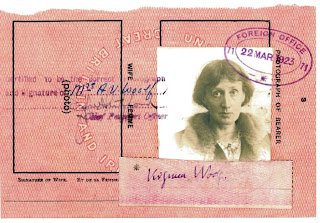Tuesday, September 30, 2008
NYC = 19th c. Paris. (version 2.0)
Sunday, September 28, 2008
Hell's Kitchen and Other Stories



Saturday, September 27, 2008
New York Historic Society

Saturday morning

Tyndall Report
Thursday, September 25, 2008
'Le Plaisir', Max Ophuls, (1952).
.jpg)
" Excuse me. I am eating a pear."
The small town gag: screwball vs. Palin


It was a stroke of broadcasting genius to have G.W.Bush 'bail out' speech of yesterday followed by a showing of 'The Great McGinty ' (1940). Preston Sturges screwball cum political satire is a fantastic election themed flick. I remember watching it during my revision and it did not disappoint upon second viewing. In the opening scene, where he's a bartender in Mexico, McGinty says 'I was the governor of a state, baby'. Hannah came in with the quip 'Just like Sara Palin' which couldn't have been more spot on. Watch the scene from 'McGinty', and then read this quotation from Palin's vice-president nomination speech, because the vibe is so unwittingly similar:
"I have had the privilege of living most of my live in a small town. I was just your average hocky mum, and signed up for the PTA because I wanted to make my kids' public education better. When I ran for city council I didn't need focus groups and voter profiles because I knew those voters, and knew their families, too. Before I became governor of the great state of Alaska, I was mayor of my hometown."
Sometimes, the face of a corrupt and morally bankrupt organization is an anyone who hasn't got a clear (or any real) clue as to 'what-is-going-on'.
It's a brilliant film, and doesn't seem like an awkward first attempt, despite the fact that it was Sturges's first big motion picture. Yesterday my parcel of Max Ophuls DVDs arrived, which has only lead to my endless longing to spend the day in bed watching them. Dad Amazon Primed them over, after I'd made an unsubtle hint with a 'New Yorker' review of them, which was so nice of him. The covers are exquisite. As Ophuls was Sturges favorite director I feel the segway is far neater then I could ever have contrived. 'What to watch in Manhattan' is another must do list.
Bush vs. Project Runway

Monday, September 22, 2008
'New.York.Life.'

"DO IT AGAIN"

"Ha.Ha." Woolf, V., (1912).

Today I walked a full rectangle around the city. I started uptown, with a walk across Central Park, to the tune of Giorgio Moroda. Then made my way down Madison Avenue, stopping at The Grolier Club for a nose around their exhibition of what you could call primary manuscripts (given that it was so long ago), between Virginia Woolf and her intimate circle. Oddly it aligns them more with how you might look at a late medieval rather than the modern printed page. However, I enjoyed the connection: it released these rather familiar characters from their biographer's shackles...and made me want to learn palaeography. The whole thing was little, but exquisite; constructed almost exclusively of handwritten letters. Bar the odd Juliet Margaret Cameron, or smudgy photocopied face, it was image free. I'm unused to seeing text as the subject rather then aid of an exhibition, and all this attention to script completely doctored the way I gazed at New York for the rest of the day. Looking back, I seem to have taken endless photographs of words.
Sunday, September 21, 2008
- to begin






